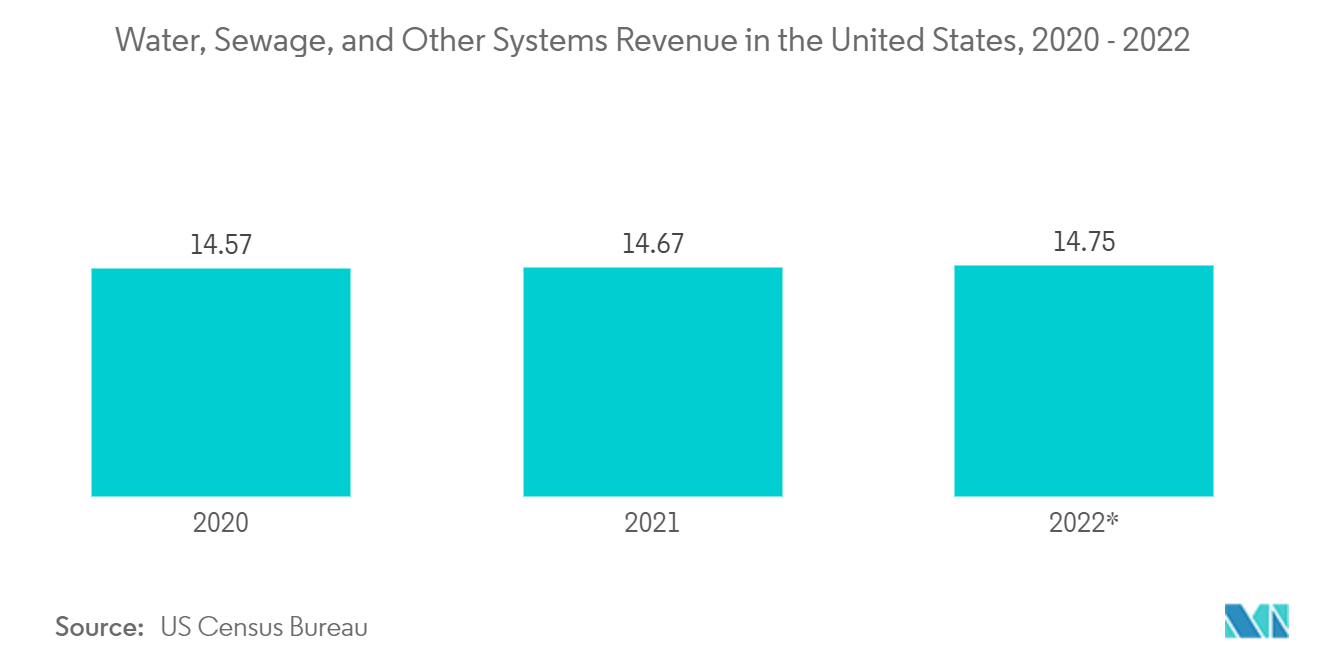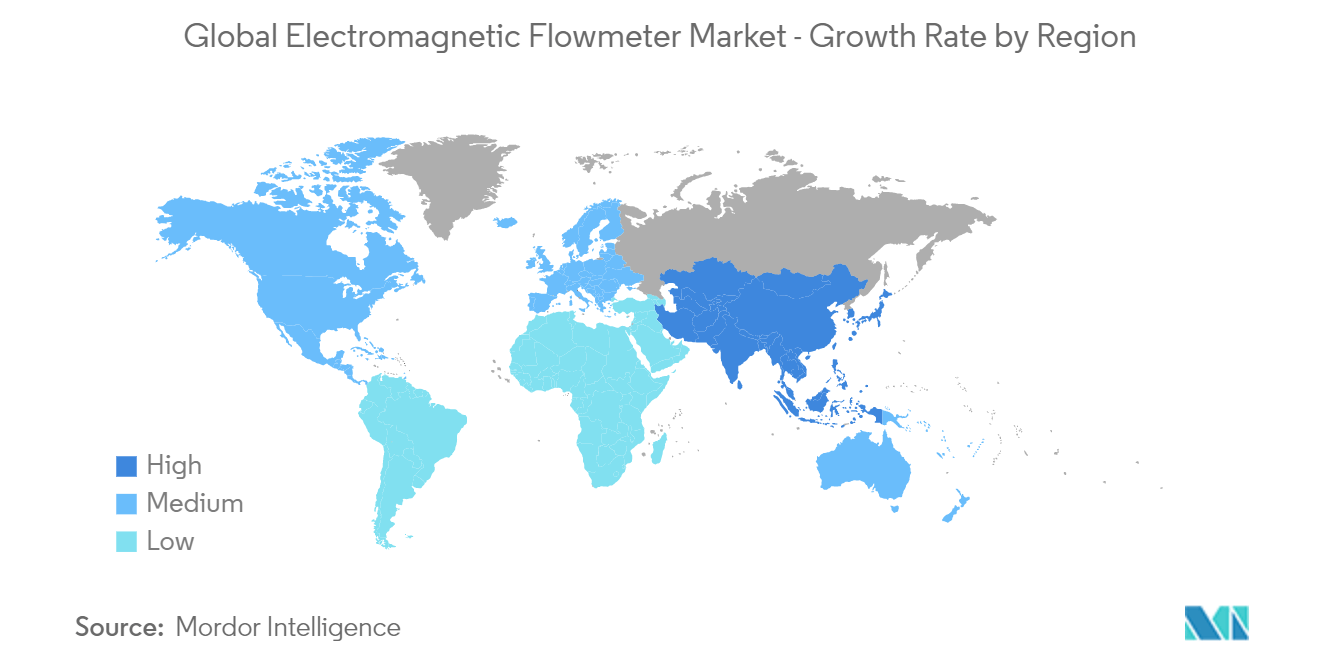Market Trends of Electromagnetic Flowmeter Industry
Water and Wastewater Industry to Witness the Highest Growth
- In industrial environments, an electromagnetic flowmeter is primarily used in water management. Decades of ongoing research and development in sensors and signal processing resulted in sophisticated electromagnetic flowmeters that can be integrated optimally into highly complex applications using measuring, controlling, and regulating technologies.
- Electromagnetic flowmeters are used to measure treated and untreated sewage, processed water, water, and chemicals. Their power usage is relatively low, with electrical power requirements as low as 15 watts for some models. Therefore, with increasing investments in water infrastructure, electromagnetic flowmeters are also expected to witness a rise in adoption.
- Once the electromagnetic flowmeter is calibrated to operate with water, it can be further used to measure the other conductive fluids with no additional correction. This is a significant advantage that different types of flow meters do not have.
- Furthermore, electromagnetic flowmeters enable the measurement of water with conductivity as low as 1 μS/cm. For low-conductivity fluids, like de-ionized water, only dual-frequency magmeters with high excitation currents and high excitation frequencies can perform such applications.
- The United States Environmental Protection Agency enforces federal clean water and safe drinking water laws, provides support for municipal wastewater treatment plants, and takes part in pollution prevention efforts aimed at protecting watersheds and sources of drinking water. According to the US census bureau, it is projected that the revenue of water, sewage, and other systems in the United States will amount to approximately USD 14.7 billion by 2022.
- Moreover, in most electromagnetic flowmeters, enhanced dual-frequency excitation with a high frequency is being made available as an optional feature. This ensures highly stable measurements in demanding applications, such as low-conductivity water.

Asia-Pacific to Emerge as the Fastest Growing Market
- The water and wastewater management industry is dominant in many countries of the Asia-Pacific region, and according to WHO, reducing wastewater generation and implementing on-site sewage and wastewater technology are two strategies that can improve wastewater management.
- According to India Brand Equity Foundation, in December 2021, India was halfway through an ambitious plan to deliver safe drinking water to all 192 million homes in 600,000 villages by 2024. Hundreds of thousands of contractors and laborers are installing more than 2.5 million miles of the pipe as part of the USD 50 billion projects, which about 18,000 government engineers oversee.
- For instance, Cleantech water, an Ahmedabad-based company, provides single-window decentralized solutions for wastewater treatment, catering to industrial and domestic needs. The company offers a variety of wastewater treatment and water treatment solutions, such as sewage treatment plants, grey water treatment plants, effluent water treatment plants, industrial water treatment, RO plants, pressure sand filter systems, and dual media filters.
- Furthermore, the Water Environment Partnership in Asia (WEPA) also aims to improve the water environment by offering information and knowledge necessary for enhancing water environment governance. Such factors have significantly contributed to the growth of the region.


